Caitlin McDonough
Caitlin McDonough is a first year biology graduate in the Center for Reproductive Evolution. When not dissecting fruit flies, she plays rugby, draws and disrupts conventional scientists by talking about feminism and queer studies. More information can be found at her website cemcdonough.com or fledgling blog ideaspermatheca.com.
You can view and comment on Caitlin’s posts individually via the links below:
The Fertility of Miró (27 Feb. 2015)
Perils of Click-Bait Science Communication, or There’s Many a Slip ‘twixt the Cup and the Lip (20 Feb. 2015)
Austen & Darwin, Love Doctors?: A Valentine’s Day/ Darwin Day Tribute (13 Feb. 2015)
A Scientist Walks into an English Blog: Language, Gender, Feminism, and the Science of Sex (6 Feb. 2015)
The Fertility of Miró (27 Feb 2015)
I have never quite gotten surrealist, post-modern art. (Left to my own devices I happily spend my museum visits floating around the impressionist era.) I look at abstract symbolic paintings and feel that I miss the intended emotion or meaning—as if the painters and their devotees speak a language I cannot understand.
That changed when I stumbled upon an ephemeral relationship between the art of Miró and fertilization research from the early 1980s to mid 1990s. This connection provided me with a whole new way to view, understand, and appreciate Miró. His art was no longer a remote, confusing abstraction, but rather an artistic reflection of the same questions about life, reproduction, and behavior I think about as a scientist.
It all started with a magazine article written by two incredible scientists, Gerald and Heidi Schatten in 1983.[i] (Fun fact, Gerald Schatten and I both attended Stuyvesant High School in NYC, albeit about 50 years apart). The Schattens illustrate the history of research in fertilization starting from Hippocraties, and the paucity of information about the female gamete that persisted until the late 1800s. As scientists probed the mysteries of the egg they found it was active in the fertilization process and discovered intricate mechanisms through which the egg cooperates to bring the sperm through its layers, fuse the maternal and paternal nuclei, and initiate development. New microscopic technologies revealed the complex internal structure of the egg that facilitates many of these key fertilization events.
In addition to describing research for a public audience, the article also included three paintings by Joan Miró, as well as works by Alexander Calder and Pablo Picasso. Nothing in the text describes the art. They are just there: full page, color reproductions, with no explanation. However, when I looked at the paintings included in the article alongside the Schattens’ scientific images of the earliest moments of sea urchin fertilization, I understood. The spherical shapes evoke the female gamete. In the painting Amour, the letters spelling the title spill out from a point on the large purple/blue shape that could be the site of fertilization. The flurry of lines, dots and shapes within the red circle of The Broken Circle captures the energetic egg paradigm the Schattens describe.
I was curious why Miró’s paintings, in particular, had been included in the article. I turned to Google, searching for something that might explain the connection between his work and reproductive biology. Although nothing on the Internet provided me with a conclusive answer, I did uncover additional incidents where Miró and fertilization research intersected.
I found an article from the Chicago Tribune in 1990 about the scientist Yury Verlinsky’s discovery of a new in vitro technology for genetic testing.[ii] If a couple is worried about having a baby because of a genetic disorder that could be inherited, Dr. Verlinsky’s technique would allow scientists to test the egg for the disease before it is even fertilized. The test is performed on DNA of the polar body, part of the egg that is extruded in the cellular divisions during maturation, and determines whether or not a baby made from that egg would inherit the genetic disorder. The article described that Dr. Verlinsky came up with the idea looking at a Miró painting:
“Relaxing after a day spent pondering the earliest stages of fetal development, Verlinsky visited a Jerusalem art gallery. He contemplated an untitled 1935 painting by the great Spanish abstractionist, Joan Miró. In Miró’s typically droll style, the painting consisted of two disks floating in space, one red, the other yellow. Just underneath the red disk was another round object, black and very tiny. Verlinksy stood and stared for a long time. The more he examined Miró’s colored disks, the more they looked to him like human eggs. Maybe the red disk became the yellow disk after it kicked out the black dot, he mused. “
I became obsessed; I needed to see the painting that had inspired the flash of genius to test polar bodies. The paltry clues included in the article were of little help. I acquired the entire catalogue of Miró’s paintings[iii] and scoured through 1935, staring at anything with even a close resemblance to the description, but nothing matched. As I resigned myself to work through Miró’s entire collection, I worried that I would accidentally skip over or not recognize the painting. My fears were unfounded. I knew immediately when I came to the The Magic of Color, 1930 that I had found it. To me, it was definitely not droll. It was glorious.
However, I was still not satisfied. I delved deeper into the pages of my Google search results until I came across a sentence in An Intimate Distance: Women, Artists and the Body by Rosemary Betterson[iv] that told of an exhibition in 1992, organized by the Joan Miró Foundation[v] on In Vitro fertilization. I scoured the recesses of the Internet to find any reference of this exhibit and came up empty handed. I was ultimately able to get my hands on both the exhibit catalogue[vi] and record of the accompanying symposium.[vii] The exhibition In vitro. From the mythology of fertility to the boundaries of science, initiated by KRTU a cultural branch of the Catalan government, was not explicitly about Miró; rather, it explored the boundary between science, history, and art in our relationship with fertility.
“We have arranged the exhibition in such a way as to show, through various nuclei, the traces and faces (archaeological, linguistic, gastronomic, artistic, ethnographic, scientific, etc.) of fertility myths, the current situation in the fight against infertility, and the prospects current research is now opening up.” – Vicenc Altaio and Anna Viega, Curators of In Vitro. 8
Pages away from each other are the Venus statues of early humans and ancient Greeks, Miró’s bronze figures of women that emphasize female secondary sexual characteristics, and tools used by midwives and obstetricians. The speculums and dilators are so structurally intricate they are at home alongside the famous sculptures. Powerpoint slides on IVF technologies that could have been pulled directly from a course in reproductive biology for conservation I took while studying abroad are nearly touching reproductions of the Virgin Mother and Child.
As a post baccalaureate fellow in the lab of Dr. Carmen Williams at the NIEHS [viii] I learned how to do in vitro fertilization of mice. I manipulated micropipettes with a joystick to hold and inject eggs in order to change their gene expression. I spent so many hours mouth-pipetting ooctytes to remove the cells that surround them when they are collected from the ovary that I would get home, close my eyes, and see them imprinted on my eyelids. In the In vitro exhibit the same images I saw, starting down a microscope, were suddenly art. Were discussed in the same breath as the biological drawings of Erns Haeckel and the renowned paintings of Picasso, Dali, and Miró.
“The beauty of the scientific images and the beauty of the artistic images – even if we are unable to read them when we are unfamiliar with their code – would suffice by themselves to justify the exhibition…”
– Vicenc Altaio and Anna Viega, Curators of In Vitro.8
My winding exploration of Miró provided me with an entirely new perspective of not only surrealist art, but also the aesthetics of my own research. More than that, Miró’s paintings reminded me of the humanity of my research. Although we are using different techniques, terminology, and mediums, fundamentally I ask the same questions about how life begins. If I am receptive to it, I can find the themes of my research in reproduction reflected throughout culture. For these reasons, and so many more, it delights me that the acronym for artificial reproductive technologies is ART.
P.S. If anyone reading this is computer programming inclined, I desperately require an app that will allow me to use Miró symbols as emoji’s. I’ll call them: Miróji’s.
Figure 1: Miro, 1967. The Gold of the Azure. http://www.fundaciomiro-bcn.org/coleccio_obra.php?idioma=2&obra=709
Figure 2: Bottom left – G. Schatten, scanning electron micrograph (SEM) image of sea urchin fertilization http://worms.zoology.wisc.edu/dd2/echino/fert/pronuclear/pronuclear.html Top are from 1. Left – Miro, 1964. The Broken Circle. Center – Miro, 1925. The Birth of the World. Right – Miro, 1926. Amour.
Figure 3: Miro, 1930. The Magic of Color. http://catalogue.successiomiro.com/catalogues/paintings-i/painting-the-magic-of-color.html
Figure 4: McDonough, C.E. and Bernhardt, M. MII egg GFP experiments.
[i] Schatten, G. and Schatten, H. 1983. The Energetic Egg. The Sciences.
[ii] Gorner, P. and Kotulak, R. 1990. Gene Screening: A Chance to Map Our Body’s Future. Chicago Tribune. http://articles.chicagotribune.com/1990-04-15/news/9001310515_1_genetic-yury-verlinsky-gene-screening
[iii] Dupin, J and Lelong-Mainaud, A. 2003. Catalogue raisonné. Paintings. Vol. I – VI. Successió Miró A.D.A.G.P., Paris.
[iv] Betterton, R. 1996. An Intimate Distance: Women, Artists and the Body. Routledge.
[v] http://www.fundaciomiro-bcn.org/fundaciojoanmiro.php?idioma=2
[vi] Altaio, V. and Viega, A. curators 1992. In Vitrode les mitologies de la fertilitat als limits de la cencia. Fundació Joan Miró, Barcelona.
[vii] Altaio, V. and Viega, A. curators 1992. In vitro a Debat Simposi. Fundació Joan Miró, Barcelona.
[viii]http://www.niehs.nih.gov/research/atniehs/labs/rdbl/pi/reproductive/index.cfm
Perils of Click-Bait Science Communication, or There’s Many a Slip ‘twixt the Cup and the Lip (20 Feb 2015)
Science communication plays an integral role in bridging the gap between academia and the public. Science writers have the tricky job of distilling complex ideas into digestible pieces, and explaining highly-specialized experiments in a way the public might find interesting. Research highlighted in the media can become part of a larger cultural conversation and have a more direct impact on people’s lives. However, in this process, a research article undergoes multiple reinterpretations, and can become detached from the original material. As a result of this process, science for public consumption tends to overemphasize human relevance, lose qualifiers or context, and frequently employs ‘click-bait’ methods of choosing catchy titles that distort the results and implications of the research.
A particularly painful example of the pitfalls of a catchy title happened in the highlight of an article on primate sexual behavior. In December 2014, a group of researchers published a study on reproductive conflict and male aggression in chimpanzees. [1] They found a correlation between high-ranking male aggression toward females during the females’ non-fertile period, and the amount of offspring that male fathered. The scientists hypothesized that sustained male aggression played a role in sexual coercion. The title of their article was relatively innocuous: “Sexually Coercive Male Chimpanzees Sire More Offspring.” However, in a companion piece meant to attract attention and describe the research for a more general audience, the title lost some nuance: “Sexual Conflict: Nice Guys Finish Last.”[2]
Nice guys finish last is a trope that has been increasingly adopted by the MRA (Men’s Rights Advocacy) movement to disparage the sexual choices of women. Although the use of this phrase was likely to add levity and attract attention with no ill intention, I was startled to see Nice guys finish last used so flippantly in a scientific journal without any consideration of the broader cultural implications. Especially last year, when misogynistic ideologies perpetuated violence against women that could not be ignored,[3] it was disturbing to see this phrase used in a way that normalized as natural biological behavior male violence towards women.
Popular science writing about fruit fly sexual behavior can also be extremely anthropomorphic and distasteful. I have come across a couple of examples in my own research area that set my teeth on edge.
About a dozen years ago scientists identified a gene that when mutated resulted in male fruit flies courting and trying to mate with other males. Their article “Conditional Disruption of Synaptic Transmission Induces Male-Male Courtship Behavior in Drosophila” discussed this gene in terms of regulation of fruit fly reproductive behavior and the flies’ ability to distinguish between females and males.[4] Misguidedly, a news post on the Science journal website decided to make this research stand out by suggesting it had direct relationship with human sexuality. In an outrageous cognitive jump, the piece was called “How to Make a Fly Bi” and included a figure caption and other language that insinuated bisexuality was the equivalent to lowered inhibitions and increased promiscuity.[5] Bisexual advocates struggle to combat the misconceptions that bisexuality is equivalent to a lack of discernment or confusion. But here, popular writing associated with a respected science journal perpetuated in these misconceptions and problematic assumptions about bisexuality.
Research on changes in female fruit fly behavior after mating suffered a similar fate in popular media. A study titled “Drosophila male sex peptide inhibits siesta sleep and promotes locomotor activity in the post-mated female” found that a specific component of the male ejaculate decreased the amount a female sleeps after mating and also increases foraging activity. [6] In a blurb on the research by the University’s publicity office the title became “Female fruit flies do chores after sex”.[7] An article by a clinical psychologist on the HuffPost Healthy Living Blog took it even further: “Housework After Sex, Not Sleep.” [8] These accessible articles drew a direct relationship between fruit fly behavior and women’s “domestic-type duties or housework” that were not implied in the original research. Although I do think changes in postmating behavior in fruit flies have some fascinating implications for changes in human behavior during gestation and birth, a direct comparison cannot be made. I am concerned about the way the popular media twisted the scientific research to reaffirm underlying assumptions of a woman’s domestic role and primary childcare provider.
Popular science writing wants to attract public interest. As a result, the cautious conclusions that scientists make with clearly stated caveats and limitations can be distorted and aggrandized in the process. Scarily, it can then be used to further a political or philosophical agenda. There is a clear responsibility for science journalists to be more rigorous in reporting the intricacies of science research, as well as be more cognizant of the ways their reporting uses research to reaffirm cultural stereotypes. As a scientist, I also wonder what is our responsibility after we publish a paper? Are we completely out of control of the dissemination of information to the public? If research is taken out of context, or absurd associations to humans are drawn, if the scientist is appalled with the implications derived from their work, what should we do? Scientists need to become more involved in the science communication process, and to be trained how to explain and our research in ways that the public can understand, but that still situate it appropriately in broader contexts. The challenge is finding the time and a platform for a scientist to make sure the totality of their research message makes it safely, with only minimal slips, to the public.
[1] Feldblum, J.T., Wroblewske, E.E., Rudicell, R.S., Hahn, B.H., Paiva, T., Cetinkaya-Rundel, M., Pusey, A.E., Gilby, I.C. 2014. Sexually Coercive Male Chimpanzees Sire More Offspring. Current Biology. 24: 2855 – 2860.
[2] Thompson, M.E. 2014. Sexual Conflict: Nice Guys Finish Last. Dispatch, Current Biology. 24: R1125 – R1127.
[3] http://www.theguardian.com/commentisfree/2014/may/24/elliot-rodgers-california-shooting-mental-health-misogyny
[4] Kitamoto, T. 2002. Conditional Disruption of Synaptic Transmission Induces Male-Male Courtship Behavior in Drosophila. Proc. Natl. Acad. Sciences.
[5] Beckman, M. 2002. How to Make a Fly Bi. Science News Biology http://news.sciencemag.org/2002/09/how-make-fly-bi
[6] Isaac, R. E., Li, C., Leedale, A.D. 2009. Drosophila male sex peptide inhibits siesta sleep and promotes locomotor activity in the post-mated female. Proc. Royal. Soc. B.
[7] http://www.sciencedaily.com/releases/2009/09/090929203941.htm
[8] Breus, M.J. 2010. Housework After Sex, Not Sleep. Huffpost Healthy Living Blog. http://www.huffingtonpost.com/dr-michael-j-breus/housework-after-sex-not-s_b_345568.html
Austen & Darwin, Love Doctors?: A Valentine’s Day/ Darwin Day Tribute (13 Feb 2015)
A few months ago my Google Scholar alert for mate choice turned up a paper not about insect courtship behavior or sexual selection, but Jane Austen.[1] The only time previously I had ever thought about Austen and evolution together was while I wrote lab reports and wished I could be watch Pride and Prejudice instead. However, as I looked into the connection between Austen and Darwin, I found abundant similarities: both are from similar social situations in Victorian England, are younger siblings, keen observers, and skilled writers whose works and ideas have persisted in the cultural psyche.[2] There is even an overlap in subject matter: sexual selection, mate choice, and kinship dynamics in Darwinian terms or courtship, romance, and family in Austen.
Although I ardently admire and love both Austen and Darwin/evolution, I have always been a bit dubious that either is able to capture the totality of human sexual experience. Science can examine underlying explanations and evolutionary motivations; experiments have found that had women prefer the used t-shirts stench of men with diverse immunity genes[3] and that during their most fertile period women are more attracted to masculine faces.[4] Neurologists have even put people in love into MRI machines to find that amore is really just the stimulation of reward pathways in the brain.[5] Although this information is edifying and valuable, science cannot capture the emotions of a romantic zenith way Austen does. As much as I love sexual selection and reproductive biology, for me, the realm in which Elizabeth Bennett finally accepts Mr. Darcy’s hand in marriage does not need to be predicated on science. Thus, I was excited about the prospect of literary Darwinism–a theoretical approach that could marry sexual selection theory with prose that evokes the passion of romance.
The Kruger et al. article that popped up in my email is an excellent example of both the insights and detriments that can arise in the utilization of literary Darwinism. The authors evaluated the behavior of Austen’s characters and identified two different alternative female mating strategies: long term (Jane Bennett and Fanny Price) and short term (Lydia Bennett and Maria Bertram). At first, I did not think the strategies described would match the biological definition of discrete tactics in a trait with genetic and/or environmental variation. However, a search through the scientific literature of human evolution revealed I was wrong. A number of studies corroborate that the alternative strategies identified in Austen’s novels also exist in humans.[6],[7] The introduction to the analysis taught me something new about evolution, and the authors seemed to be on firm biological ground discussing the proximate and ultimate goals in human reproduction and the costs and benefits of the different strategies.
Unfortunately, Kruger et al.’s analysis of Austen’s characters strategies quickly diverged from a foundation in evolutionary theory to moralistic, tautological ‘conclusions’ on universals of human sexual behavior. The underlying hypothesis “Both men and women should also be wary of short term, opportunistic, and/or uncommitted female strategists” clearly reveals a subconscious bias for long term strategies. This assumption, that a long term ‘family’ strategy is better than a short term ‘flirtation’ strategy is never tested and has no biological foundation.
In order to comprehensively evaluate alternative female strategies, it would be necessary employ scientific methods. Evolutionary biologists measure the success of a strategy by evaluating its fitness. Fitness is the combination of the effects the strategy has on an individual’s survival, number of offspring and success of those offspring. However, with fictional characters we do not have access to any future life history information (if wishing made it so). A happy long-term strategy marriage cannot simply be assumed to be more productive than a short-term strategy. If Fanny Price does not have children with her soul-mate husband, her strategy is no more fit than Maria Bertram who ended up alone. It does not matter that Mr. and Mrs. Bennett make each other miserable, or his estate was to be entailed away; they are evolutionarily successful with five children, most of who are on their way to reproducing.
I was disappointed by my first foray into literary Darwinism. The use of the scientific terminology felt inaccurate, as if the authors were trying to force science into their analysis even though it did not quite fit. It also seemed as though the authors were not familiar with the nuances of evolutionary theory. For instance, although in an introductory biology class sexual selection is often presented as a static theory, it is actually incredibly dynamic. The sexual selection we think of today has been modified and changed from what Darwin first proposed.[8] Even now, there are multiple, sometimes conflicting hypotheses of the underlying sexual selection mechanisms, and no single consensus in the biological community. If literary scholars are going to use evolutionary theory, it is important they fully understand its intricacies and idiosyncrasies.
I was ready to be completely dismissive of all literary Darwinism as a reductive misuse of evolutionary theory. Fortunately, a more comprehensive discussion of literary Darwinsim’s potential by Joseph Carroll [9] convinced me not to throw the baby out with the bathwater. If conducted properly, literary Darwinism could use evolutionary theory to provide new insights into our understanding and interpretation of literature. In turn the descriptions of human behavior in different historical and cultural contexts from novels can inform research on human and cultural evolution.
Did I end up copiously re-watching Sense and Sensibility (Emma Thompson is a goddess) and other period dramas on Netflix? Yes, yes I did.
Figures: pulp fiction cover –comicvine.com, Jane Austen – austenblog.com, young Darwin – lookingfordarwin.com, old Darwin – es.wikipedia.org/wiki/Charles_Darwin, Elizabeth Bennet and Mr. Darcy bookcoverings.com
Austen, J. 1813. Pride and Prejudice.
[1] Kruger, D.J., Fisher, M. L., Strout, S. L., Clark, S. Lewis, S. and Wehbe, M. 2014. Pride and Prejudice or Family and Flirtation? Jane Austen’s Depiction of Women’s Mating Strategies. Philosophy and Literature, 38: A114 – A128.
[2] Graham, P. W. 2008. Jane Austen & Charles Darwin: Naturalists and Novelists. Ashgate Publishing Ltd.
[3] Thornhill, R., Gangestad, S.W., Miller, R., Scheyd, G., McColough, J.K., and Franklin, M. Major Histocompatibility Compex Genes, Symmetry, and Body Scent Attractiveness in Men and Women
[4] Johnston, V.S., Hagel, R., Franklin, M., Fink, B., and Grammer, K. 2001. Male Facial Attractiveness: Evidence for Hormone-Mediated Adaptive Design. Evolution and Human Behavior
[5] Fisher, H., Aron, A., and Brown, L.L. 2005. Romantic Love: An fMRI study of a Neural Mechanism for Mate Choice. J. Comp. Neurology.
[6] Wlodarski, R., Manning, J., Dunbar, R.I.M. 2015 Stay or Stray? Evidence for Alternative Mating Strategy Phenotypes in both Men and Women Biol. Lett. 11.
[7] Jackson, J.J. and Kirkpatrick, L.A. 2007. The Structure and Measurement of Human Mating Strategies: Toward a Multidimensional Model of Sociosexuality. Evolution and Human Behavior. 6: 382 – 391
[8] Prum, R.O. 2012. Aesthetic Evolution by Mate Choice: Darwin’s Really Dangerous Idea. Phil. Trans. R. Soc. B. 367: 2253 – 2265.
[9] Carroll, J. 2004. Chapter 6: Human Nature and Literary Meaning: A Theoretical Model Illustrated with a Critique of Pride and Prejudice p. 187 – 216. Literary Darwinism: Evolution, Human Nature, and Literature. Routledge, NY
A Scientist Walks into an English Blog: Language, Gender, Feminism, and the Science of Sex (6 Feb 2015)
I spend my day thinking about sex.
Mostly, sex between male and female fruit flies. I am curious about what happens after they finish doing the deed and sperm move through the female reproductive environment on their journey to the egg. Interested in the changes that occur within the female after sex, how her body interacts with the foreign substances contributed by the male ejaculate, and how an egg gets ready to be fertilized. Ultimately, I try to use fancy scientific techniques to figure out what happens between sex and a baby/larvae on a molecular level.
I am an evolutionary reproductive biologist. While that may not seem like it has much to do with English and the humanities, they actually intersect quite a bit. I like to think of science and culture as constantly interacting, feeding off of and into each other (in science-y jargon, they are symbiotic). For example, a lot of people, in addition to me, spend a fair amount of time thinking about sex. Usually sexier human sex as well as things related to sex such as sexuality and gender expression. These thoughts and the cultural opinions on these topics can then influence scientists.
Emily Martin, an anthropologist, exposed the problematic ways underlying cultural perceptions of sex and gender show up as gendered, sexist language in scientific texts, especially in relation to reproductive biology.[1] Sperm are often described as active and aggressive, competing and battling their way to the prize. Sperm penetrate, sperm fertilize. Eggs, on the other hand, are fertilized. They are passive and fragile, damsels in distress waiting to be rescued by the sperm. These descriptions align closely with cultural expectations of men and women’s behavior. Thus, an insidious feedback loop is formed: gender stereotypes are applied to our sex cells, which is then subconsciously picked up and perpetuated by scientists, reaffirming underlying cultural assumptions. If the gendering of sperm and eggs on its own was not problematic enough, it is also likely that preconceptions of sex cell behavior affect the science that is conducted. For example, the cultural assumption that sperm (men) do all the work may be part of the reason it took nearly a century for the active role of eggs in fertilization to receive attention.[2]
My personal pet peeve is the description of the female reproductive tract as an inhospitable environment because the acidity and mucous can be harmful to sperm.[3] ‘Inhospitable’ makes my vagina sound like a bad bed and breakfast, not a complex reproductive organ. It is especially annoying because those same things that make the vagina a difficult place for sperm to survive also reduces infections and prevents fertilization by muliple or abnormal sperm. What from a sperm’s perspective is a dangerous environment, to me is protective. Nevertheless, it is the male viewpoint that dominates in textbooks.
Luckily, intrepid scientists are calling out the influence that preconceived ideas of gender and sex can have on science. Starting all the way back in the late 19th century, suffragettes (including one born only an hour away from Syracuse) criticized the Victorian sensibilities and male centric bias of Darwin’s theory of evolution.[4] Zoom forward to the end of the 20th century; increased representation of women in sciences and a concentration on female behavior revealed a complex, active, and often polyamourus, role of females in sexual encounters. Feminist scientists incorporated this new data and along with critiques on Darwinian theory to generate Darwinian feminism, which focuses on variation and plasticity rather than the archetypal survival of the fittest.
Feminist critiques of biology are also working in tandem with growing gender and sex fluidity theories to dismantle the dominant binary sex/gender paradigm. Scientists have drawn attention to sex difference studies that are overly biologically deterministic and do not include the effects of culture or environment. [5] In addition, developmental biologists are reimagining gender and sexuality in terms of variable, not fixed, reproductive development and interactions between nature and nurture. Currently, scientists are even applying queer theory to critique the heternormitivity of biology.[6]
Unfortunately, feminist biology is controversial and receipt of these critiques by the scientific community at large is tepid at best. I was surprised to experience it myself when I prepared to go to a symposium on Feminist Biology. I gave a practice presentation to a group of colleagues and it was recommended that instead of calling myself a feminist, I should say I ‘apply feminist theories or methodologies’. Calling myself a feminist, they suggested, implied advocacy, biased thinking, and potentially bad science. The scientific façade of an unbiased, impartial pursuit of truth contributes to the resistance of the scientific community to critiques from the social sciences and humanities
Although I spend far too much of my time isolated, mating flies in a lab of the Life Science Center (a Syracuse approximate of the ‘ivory tower’), I would much rather take a leaf from the book of my humanities colleagues and proclaim my positionality and how it might affect my knowledge production rather than sweep it under a rug. In turn, science can then provide a different, intimate and revealing look into the nature, and sex, around us.
[1] Martin, E. 1991. The Egg and the Sperm: How Science Has Constructed a Romance Based on Stereotypical Male-Female Roles. Signs, 485 – 501.
[2] Schatten, G. and Schatten, H. 1983. The Energetic Egg. The Sciences, 28 – 35.
http://web.stanford.edu/~eckert/PDF/Martin1991.pdf
[3] Too many scientific texts and IVF websites too list, seriously, I can’t even. Google it.
[4] Fausto-Sterling, A., Gowaty, P. A., Zuk, M. 1997. Evolutionary Psychology and Darwinian Feminism. Feminist Studies, 402 – 417. http://www.jstor.org/discover/10.2307/3178406?sid=21105762830683&uid=4&uid=3739256&uid=3739832&uid=2
[5] Fausto-Sterling, A. 2000. Sexing the Body.
[6] Ah-King, M. 2009. Queer Nature: Towards a Non-Normative View on Biological Diversity. In Body Claims eds Brromseth, J., Folkmarson, K., and Mattsson, K. 212- 232. http://uu.diva-portal.org/smash/get/diva2:329592/FULLTEXT01.pdf
& Roughgarden, J. 2009. Evolution’s Rainbow: Diversity Gender and Sexuality in Nature and People.
Figure is a mashup of artificially colored egg and sperm microscopy (David M. Phillips/Science Source) found on http://www.npr.org/blogs/health and clip art from http://www.canstockphoto.com/
Archives
- April 2025
- March 2025
- February 2025
- September 2024
- February 2024
- January 2024
- October 2023
- May 2023
- March 2023
- February 2023
- December 2022
- November 2022
- October 2022
- May 2022
- April 2022
- March 2022
- February 2022
- December 2021
- November 2021
- October 2021
- June 2021
- May 2021
- April 2021
- March 2021
- March 2020
- February 2020
- December 2019
- November 2019
- October 2019
- September 2019
- August 2019
- April 2019
- March 2019
- February 2019
- January 2019
- December 2018
- November 2018
- October 2018
- September 2018
- April 2018
- March 2018
- February 2018
- January 2018
- December 2017
- November 2017
- October 2017
- September 2017
- May 2017
- April 2017
- March 2017
- February 2017
- January 2017
- December 2016
- November 2016
- October 2016
- September 2016
- April 2016
- March 2016
- February 2016
- January 2016
- December 2015
- November 2015
- October 2015
- September 2015
- May 2015
- April 2015
- March 2015
- February 2015
- January 2015
- December 2014
- November 2014
- October 2014
- September 2014
- August 2014
Calendar
| M | T | W | T | F | S | S |
|---|---|---|---|---|---|---|
| 1 | 2 | 3 | 4 | |||
| 5 | 6 | 7 | 8 | 9 | 10 | 11 |
| 12 | 13 | 14 | 15 | 16 | 17 | 18 |
| 19 | 20 | 21 | 22 | 23 | 24 | 25 |
| 26 | 27 | 28 | 29 | 30 | 31 | |

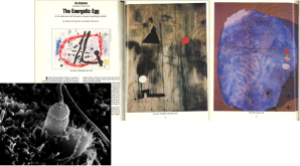


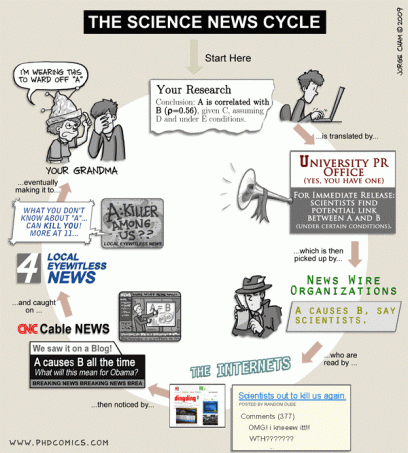
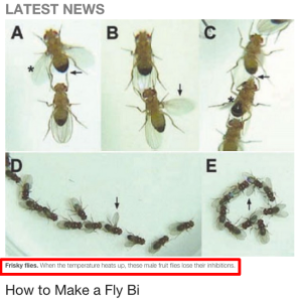
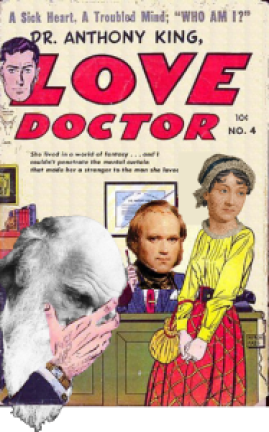
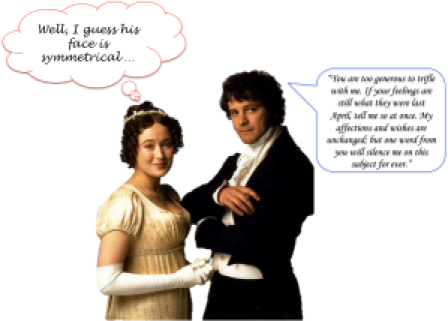
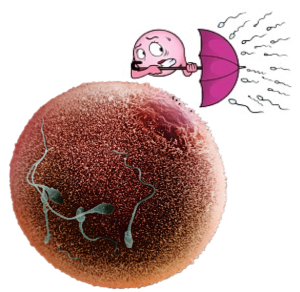
Leave a Reply